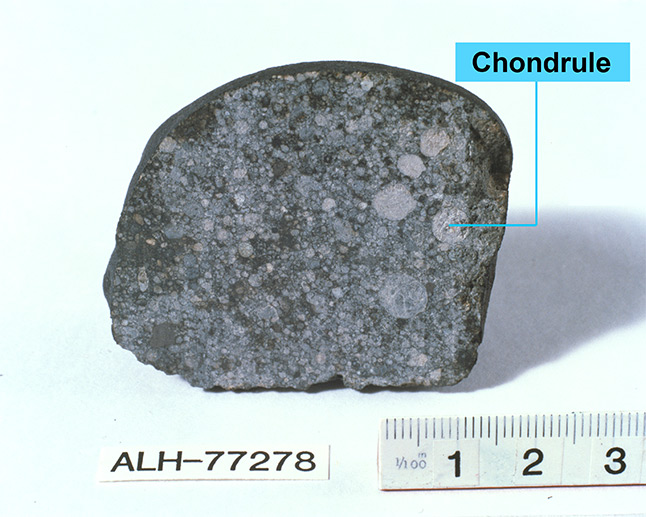Antarctic Meteorites and Meteorite search

What is meteorite?
Meteorites, defined as solid fragments larger than ~1 millimeter, are extraterrestrial materials that have traveled from space to land on the Earth. Upon entering Earth's atmosphere, their surface undergoes intense heat, causing their surfaces to melt and subsequently solidify. This process results in a characteristic black fusion crust. On the other hand, particles smaller than ~1 millimeter, which also descend from space, are categorized as micrometeorites or cosmic dust.
Many of the meteorites are unique in that their formation ages are commonly as old as 4.6 billion years. This age is never found in Earth's rocks, where continuous igneous activity due to plate tectonics occurs. Such a significant age highlights meteorites as among the most ancient materials available for scientific study. It is also known that the elemental abundances of chondrites (see below) are similar to those of the solar atmosphere, except for volatile elements such as hydrogen and helium, which are not well incorporated into rocks and metals. This suggests that chondrites were formed during the early stages of the solar system and have not undergone minimal alterations since their formation.
Most meteorites are believed to originate from small bodies in the asteroid belt between the orbits of Mars and Jupiter. These small bodies did not experience large-scale volcanic activity because they did not accumulate internal heat. This is why meteorites preserve their primitive nature and formation age of the early solar system.
Types of Meteorites
Many meteorites are chondrites, composed of numerous chondrules less than 1 millimeter in size.

Chondrules
Many meteorites are chondrites, composed of numerous chondrules around 1 millimeter in size. Chondrules are formed when droplets of once-melted rock or metal cool and solidify rapidly. The aggregation of these solidified chondrules results in chondrites. While there are various theories regarding the heat source and formation mechanism of chondrules, it is generally believed that they formed from the rapid melting of precursor materials like rock or metal dust in the protoplanetary nebula of the early Solar System due to shockwave heating. After this melting, they quickly cooled and solidified.
Based on their chemical characteristics, chondrites are categorized into different types, such as ordinary chondrites, carbonaceous chondrites, and enstatite chondrites. Petrographic types of meteorites are also sometimes distinguished numerically, as chondrule distinctness reflects the degree of thermal metamorphism in a celestial body.
Meteorites that aren't chondritic in nature are termed achondrites. Achondrites are fragments from differentiated bodies like the asteroid Vesta, the Moon, or Mars. Other known meteorite types include iron meteorites and stony-iron meteorites. Even within the same category, each meteorite can exhibit unique characteristics, making it crucial to study a large number of them to understand the formation process of the solar system.



